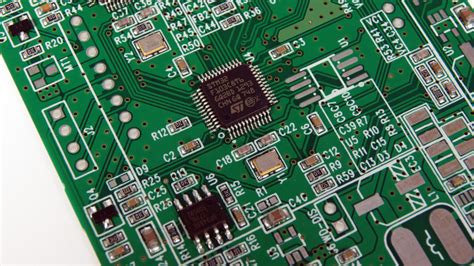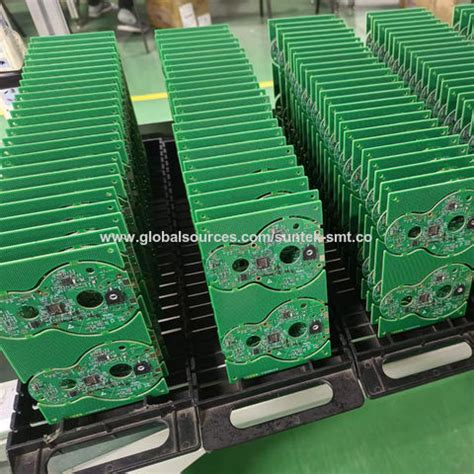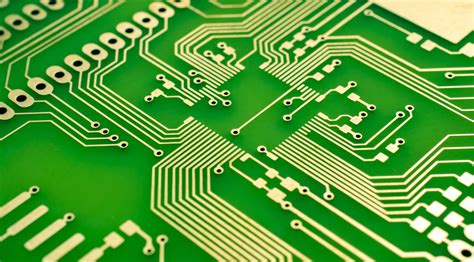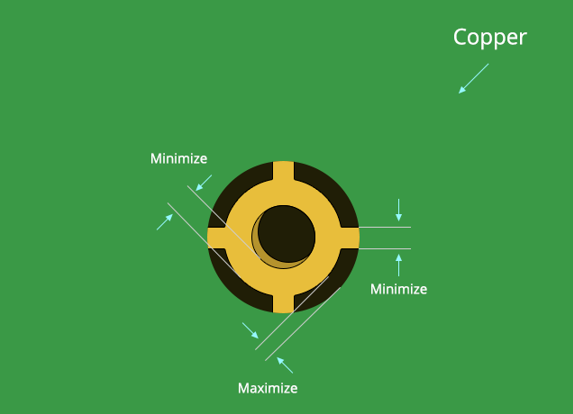High Volume PCB Assembly: Key Strategies for Success

Key Takeaways
Achieving success in high volume PCB assembly requires a strategic approach that encompasses various elements of production. Understanding the intricacies of PCB assembly processes is vital, as it lays the foundation for effective implementation. By adopting best practices in pcba, such as optimizing workflow and minimizing bottlenecks, manufacturers can enhance overall efficiency. Employing advanced techniques, such as automation and intelligent systems, can further boost production rates while maintaining quality standards. It’s equally important to implement robust quality control measures throughout the manufacturing process to ensure that each pcba meets industry standards and specifications. Staying at the forefront of innovations in PCB materials and technologies also plays a critical role; utilizing cutting-edge materials can lead to improved performance and durability of electronic products. Moreover, investing in workforce training is essential for fostering skills necessary for assembly excellence, promoting a culture of continuous improvement among staff members. Finally, analyzing successful case studies of high volume PCB assembly implementations provides valuable insights that other manufacturers can leverage to inform their strategies moving forward. These key takeaways highlight essential components for thriving in a competitive market focused on large-scale production efficiency.

Understanding High Volume PCB Assembly: An Overview
High volume PCB assembly (also known as PCBA) plays a critical role in the electronics manufacturing industry, where efficiency and quality are paramount. This process involves the mass production of printed circuit boards (PCBs) that are essential components in a plethora of electronic devices. As manufacturers strive to meet increasing market demands, understanding the intricacies of high volume PCB assembly becomes essential. One key element is the ability to integrate automated processes that enhance accuracy while reducing overall production time. Implementing such automation not only minimizes human error but also assures consistent quality across large batches of product.
Moreover, an effective high volume PCBA strategy includes optimizing supply chain management to ensure components are readily available and maintain a steady flow of materials into production lines. This can be achieved through strong partnerships with suppliers and utilizing real-time inventory tracking systems. Regular communication with suppliers can help mitigate risks related to shortages or delays, ensuring that production schedules remain uninterrupted.
“Investing in robust logistics systems can greatly enhance overall efficiency in high volume assembly environments.”
Furthermore, staying current with emerging technologies is crucial for those involved in PCB assembly processes. Innovations such as advanced soldering techniques and new materials can offer better performance and reliability for end products, ultimately contributing to customer satisfaction and loyalty. By embracing these advancements, manufacturers can not only improve their production capabilities but also position themselves as leaders within the competitive electronics market. Understanding these aspects lays the foundation for achieving success in high volume PCB assembly, enabling companies to thrive in a fast-paced industry where quality and efficiency align seamlessly.

Best Practices for Streamlining PCB Assembly Processes
To ensure efficient PCB assembly, implementing best practices is crucial in achieving high volume production. One of the first steps is to standardize processes across the assembly line. By creating a step-by-step guide for each function, operators can quickly adapt to changes and maintain consistency. Additionally, adopting a lean manufacturing approach can significantly enhance workflow by reducing waste and optimizing resources.
Another key aspect is the careful selection and placement of components on the printed circuit board (PCB). Using automated systems for component placement not only increases speed but also improves accuracy, thereby decreasing the likelihood of errors that lead to costly rework. It’s also beneficial to implement real-time monitoring systems that collect and analyze data on productivity and quality metrics, enabling swift identification of potential issues.
Furthermore, investing in workforce training and development boosts efficiency. Providing regular workshops and training sessions ensures that team members are up-to-date with the latest techniques in PCBA, which can lead to innovative solutions tailored for specific production challenges. In table format below, we summarize these best practices:
| Best Practice | Description |
|---|---|
| Standardization | Create consistent guidelines for assembly tasks |
| Lean Manufacturing | Minimize waste while maximizing efficiency |
| Automated Component Placement | Enhance speed and accuracy in placing components |
| Real-time Monitoring | Analyze productivity data to identify issues quickly |
| Workforce Training | Keep team members updated with recent industry techniques |
Implementing these strategies not only streamlines PCB assembly processes but also positions organizations favorably within the competitive landscape of high volume production, ultimately paving the way for sustained success in the industry.

Advanced Techniques for Enhancing Production Efficiency
In the realm of high volume PCB assembly, embracing advanced techniques can significantly boost production efficiency. One of the foremost strategies is the integration of automated processes that reduce human error and expedite output. This includes implementing automated optical inspection (AOI) systems that ensure high-quality standards by quickly identifying defects in real-time. Further, incorporating robotics for repetitive tasks not only enhances speed but also mitigates strain on human operators, allowing them to focus on more complex aspects of the PCB assembly process.
Additionally, utilizing sophisticated software solutions for production planning and inventory management can optimize resource allocation and minimize waste. These tools enable manufacturers to forecast demand more accurately and adjust their operations accordingly. Another pivotal approach involves lean manufacturing principles, which aim to streamline processes by eliminating unnecessary steps, thereby enhancing overall efficiency.
Furthermore, investing in advanced soldering technologies, such as selective soldering or laser soldering, can improve the quality and reduce rework rates in PCBA. It is essential to identify techniques that align with specific production goals while remaining adaptable to future innovations in materials and methods. By implementing these advanced techniques effectively, organizations engaged in large-scale PCB assembly can achieve significant productivity gains while maintaining quality standards essential for competitive success in the market.
Quality Control Measures in High Volume Manufacturing
In the realm of high volume PCB assembly, maintaining rigorous quality control measures is paramount. As production rates increase, the likelihood of defects can also rise, making it essential to implement comprehensive strategies that ensure each PCBA meets stringent quality standards. These measures often begin with meticulous incoming materials inspection; only high-quality components should be allowed into the production line. Automated testing processes, such as in-circuit testing (ICT) and functional testing, play a crucial role in detecting defects early in the assembly process, thereby minimizing waste and rework. Additionally, adopting advanced technologies like automated optical inspection (AOI) can significantly enhance defect detection rates, providing real-time feedback to operators. Continuous monitoring of production metrics is also vital; through data analysis and process optimization, manufacturers can identify trends and implement improvements swiftly. Ultimately, investing in a robust quality management system not only safeguards product integrity but also enhances overall productivity, ensuring that every batch of PCB assembly upholds the highest standards of quality and reliability. By prioritizing these control measures, companies can achieve consistency in production while fostering customer trust in their products.

Innovations in PCB Materials and Technologies
The world of PCB assembly is continuously evolving, driven by rapid advancements in materials and technologies. One prominent innovation is the transition to high-frequency materials, which enable better signal integrity and reduce electromagnetic interference in smaller circuit designs. Additionally, sustainable materials are gaining traction, allowing manufacturers to minimize their environmental impact while maintaining performance standards. The integration of flexible PCBs has also revolutionized design possibilities, providing greater adaptability for various applications, particularly in compact electronics and wearable devices.
Moreover, automated assembly processes are reshaping pcba, increasing production speed and accuracy. By employing sophisticated robotic systems and machine learning algorithms, companies can optimize their workflows to address the challenges of high volume production efficiently. This technology not only streamlines assembly processes but also enhances the overall quality of the finished products. Furthermore, advancements in soldering techniques, such as selective soldering and advanced reflow methods, ensure optimal bonding and durability.
As manufacturers strive for excellence in high volume PCB assembly, embracing these innovations becomes essential. Utilizing cutting-edge materials alongside next-generation technologies can provide a competitive edge in today’s fast-paced marketplace, ultimately leading to enhanced productivity and superior quality assurance throughout the production cycle.
Workforce Training and Development for Assembly Excellence
Investing in workforce training and development is pivotal for achieving excellence in high volume PCB assembly. As the landscape of manufacturing processes evolves, ensuring that employees are equipped with the latest skills and knowledge becomes essential. Effective training programs should focus on imparting a deep understanding of PCBA technologies, enabling workers to navigate complex assembly operations efficiently. Emphasizing hands-on experience alongside theoretical knowledge fosters a culture of quality and precision within teams. Moreover, ongoing development opportunities are crucial; they not only enhance productivity but also increase employee morale and retention rates. By implementing tailored training strategies that address specific challenges within pcb assembly, organizations can cultivate a skilled workforce that significantly contributes to overall operational success. This commitment to education ultimately leads to the production of superior quality PCBs and enhances the competitiveness of manufacturers in the dynamic electronic market.

Case Studies: Successful High Volume PCB Assembly Implementations
In the realm of high volume PCB assembly, numerous companies have embarked on journeys to enhance their production capabilities and achieve remarkable success. For instance, one leading electronics manufacturer implemented state-of-the-art pcba techniques to streamline their processes. By integrating automated assembly lines with cutting-edge PCB inspection technologies, they not only increased their output but also improved the accuracy of their products. Another example can be found in a telecommunications firm that adopted a comprehensive training program for its workforce, focusing on the skills necessary for managing large-scale productions. This initiative resulted in a significant reduction in assembly time and an increase in overall productivity, confirming the importance of investing in human capital alongside technical advancements. Lastly, a prominent automotive supplier shared insights on how innovative PCB materials played a crucial role in reducing weight while maintaining durability, which was pivotal for their high-volume production needs. These case studies illustrate that adopting best practices and embracing modern technologies are key factors that contribute to successful pcba implementations in high volume settings. Each example offers valuable lessons for companies aiming to enhance their own assembly processes and achieve excellence in the competitive landscape of electronics manufacturing.
Future Trends in High Volume PCB Production
As technology continues to evolve rapidly, the high volume PCB assembly landscape is poised for significant transformation. One of the key trends is the increased integration of automation into the PCBA process. Automated systems not only enhance speed and efficiency but also reduce human error, ensuring a more consistent output. Additionally, the incorporation of artificial intelligence and machine learning into production lines can lead to predictive maintenance, minimizing downtime and optimizing workflow. Another notable trend is the shift toward sustainable practices in pcb assembly processes. Manufacturers are now focusing on environmentally-friendly materials and energy-efficient production methods, reflecting a growing commitment to sustainability in electronics manufacturing.
Moreover, miniaturization remains a strong trend, with the demand for smaller yet more powerful devices driving innovations in PCB design and assembly techniques. Companies are exploring advanced materials that enable thinner and lighter boards without compromising performance. The rise of IoT devices also contributes to a diverse range of settings where PCBA must adapt to various operational environments, thus requiring enhanced durability and functionality.
As we look ahead, strategic investments in emerging technologies such as flexible circuit boards and 3D printing for PCBs will likely reshape traditional manufacturing paradigms, offering greater customization options for clients. In summary, the future of high volume PCB production will be defined by smart technology adoption, sustainability efforts, miniaturization challenges, and innovative material choices that collectively enhance production efficiency while meeting evolving market demands.
Conclusion
In the realm of high volume PCB assembly, success hinges on a confluence of effective strategies and practices. Organizations engaged in pcba must prioritize quality control measures and leverage advanced technologies to enhance productive output. By implementing streamlined processes, companies can optimize their pcb assembly operations, reducing lead times and minimizing waste. Additionally, investing in the training and development of the workforce ensures that all members are equipped with the necessary skills to maintain excellence in assembly practices. Embracing innovations in materials and methodologies not only boosts productivity but also assures the durability and reliability of finished products. Ultimately, recognizing emerging trends in high volume PCB production will position companies for ongoing success in a competitive landscape.
FAQs
What is high volume PCB assembly?
High volume PCB assembly (commonly referred to as PCBA) involves the mass production of printed circuit boards with precision and efficiency. This process enables manufacturers to produce large quantities of electronic components quickly while maintaining high standards of quality.
What are the key strategies for successful PCB assembly?
Successful PCB assembly requires a combination of effective planning, optimal use of machinery, and skilled personnel. Employing advanced techniques like automated inspections, lean manufacturing principles, and workflow optimization can significantly enhance production efficiency.
How does quality control impact high volume PCBA?
Quality control measures are crucial in high volume PCBA, as they ensure that each board meets stringent specifications. Regular inspections and testing throughout the production process help to identify defects early, reducing waste and ensuring a reliable final product.
What innovations are driving improvements in PCB materials?
Recent innovations in PCB materials, such as flexible substrates and improved soldering techniques, have enhanced the performance and durability of PCBs. These advancements allow manufacturers to create thinner boards with greater functionality, which is essential in today’s compact electronic designs.
How important is workforce training in PCB assembly?
Workforce training plays a significant role in achieving excellence in PCBA. Well-trained employees understand advanced manufacturing processes and quality assurance principles, which directly contribute to reduced error rates and improved output quality.







